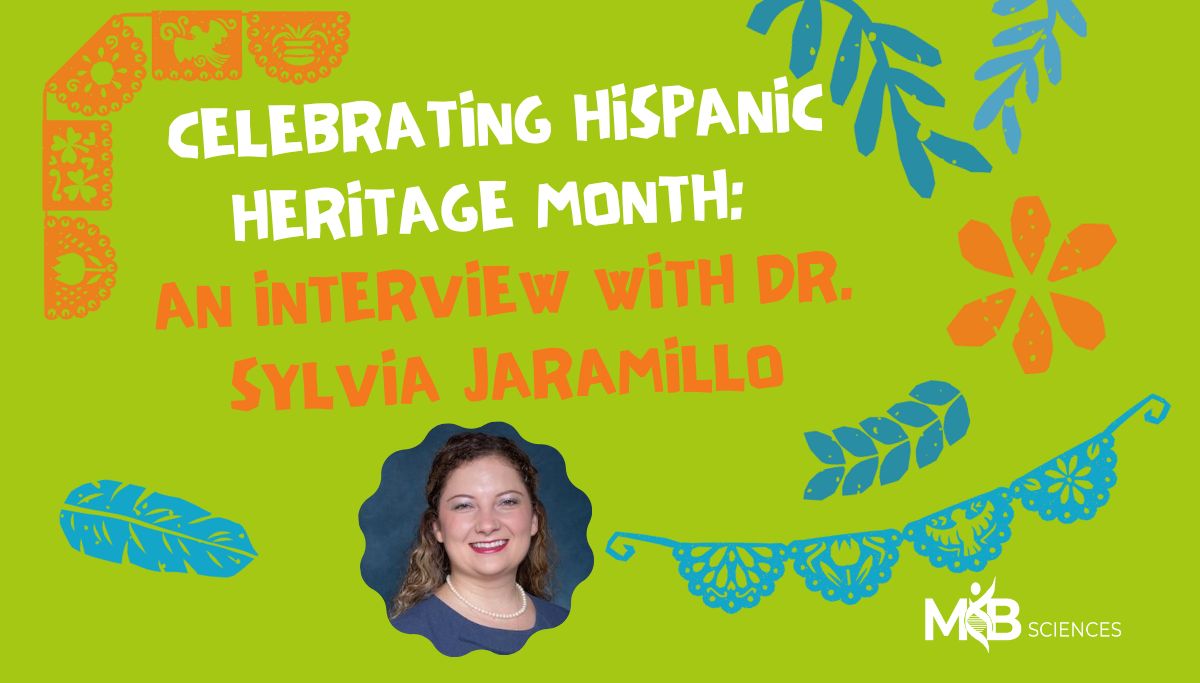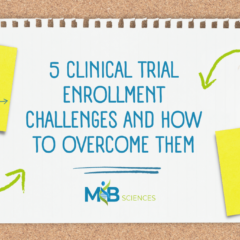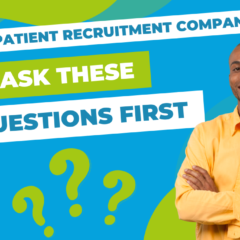Celebrating Hispanic Heritage Month: An interview with Dr. Sylvia Jaramillo
As the celebration of Hispanic Heritage Month continues, I wanted to shine a spotlight on one physician who’s making a powerful impact on people at the most challenging time in their lives.
Dr. Sylvia Jaramillo is an oncologist at Texas Oncology, specializing in patients with metastatic cancer, including lung, colon and breast cancer. She has participated in outreach to improve cancer education in the Hispanic and Latino communities, including a Spanish-language radio show. Dr. Jaramillo is completing a master’s degree in public health with the goal of becoming more involved in policy as the healthcare system evolves.
We recently caught up to talk more about her heritage, the patients she serves, and the advancements she believes are most promising in the field of cancer research.
Tell us about your heritage and how it impacts the relationship you have with your patients.
I am Colombian, born in Bogota and raised in Los Angeles. My daughter will be the first generation born in Austin, Texas, so we’re very proud of that. I think how we connect back to her heritage has a lot to do with what my mom instilled in my brother and me in terms of always loving Colombian as our primary country of origin, but also combining that with the understanding that we are American. So we celebrate many of the Colombian holidays and important things that are important to Colombians like soccer. We also celebrate a lot of American holidays. My mom is a big Thanksgiving fan, so we do all the traditional get-togethers and meals. When we get together, there’s always dancing. My mom makes paella with a lot of seafood, and of course we have Colombian tamales and empanadas. And so I think it’s a combination of merging the two things, which is what I really think of when I think of the word Hispanic. Most of us come from other countries, but we’ve settled here and we’re American with Colombian hearts.
From an early age, my mom always ingrained in us the food and the music and this social aspect of Colombian culture that runs deep throughout any family. When I turned 13, she would send me to Colombia to spend the summers with my cousins, uncles, and aunts. She always instilled in us the importance of really understanding Spanish and reading it, writing it. Every Saturday I had to go to this Argentinian school and we learned the history of Argentina and we learned reading, writing, grammar, all of those things.
When I meet other doctors, I always try to remind them that I speak Spanish and that I am completely bicultural. And I think it’s so important for us as Hispanic doctors to really seek out opportunities to work with patients who share that common language…because a lot is lost in translation, and so much information needs to be conveyed.
It’s not just about language, it’s about sharing a culture. And we know that when patients are able to trust their doctors from a similar culture, their outcomes are better. There are so few Hispanic physicians compared to the general population, and even fewer in oncology.
What inspired you to become an oncologist?
I don’t know when exactly I decided to become a doctor, but I know it was from a very young age. And the farthest I can trace it in my mind was being a little girl and having to translate for my parents in different medical encounters.
I remember the mom of one of my friends was a pathologist, and she took me to the hospital with her. The older I got, the more I realized that that’s what I wanted to do because it was a combination of being with people and being there at their most vulnerable moments, but also combining that with science.
When I met my first oncology patient, I remember just being in incredible awe about how your body can change from one moment to another. One moment you’re healthy and have this normal life, and then the next, you’re sitting on an oncology floor fighting for your life.
Those were the patients I learned so much about. I would remember their stories, I would remember their names, I would remember their families. Cancer can touch any part of your body. It affects every aspect of your life, every family member, and it’s like it brings the best out in people and also the worst. But I always say that the silver lining of getting this life-threatening diagnosis is that you get to see life for what it is today and realize that if you don’t live for today, what are you doing? All the other things we worry about as humans, all the things that we think are so important, they all fade away. And when I’m sitting in front of that patient talking about what is important in their life, all the noise just goes away.
Tell me about the types of cancer you treat. How often are clinical trials offered as a treatment option?
I work with all the solid tumors, so I work with the most common cancers, lung, breast, prostate, colon, and then all the way to the more rare cancers like sarcomas. So I see such a variety of patients, not just from a biological standpoint, but also culturally, racially from every economic class. Clinical trials are very important. If we don’t offer clinical trials to patients when the right time comes, then they really miss out on a potential aspect of their care that could really improve their overall survival. For many years, people would say, “well, minority populations don’t trust the medical field and don’t trust medical providers because of all the atrocities that happened over 50 years ago. And yes, there is a component of distrust, but I find with my patients that if you offer the clinical trial and if you are able to explain the why, they almost always say yes. And that’s actually backed up by a study that was done where they actually measured the rate of response. And so it is actually no longer true that minority populations will decline clinical trials. If they are offered, they usually will accept more than 90% of the time.
When I offer a clinical trial, I always have to be careful to explain what the standard of care is, and that another trial that would offer at least standard of care because a lot of patients are afraid that we’re experimenting, but it is unethical to offer experimental therapy if they’re not offered standard of care. And so it’s often a standard of care therapy with the addition of something else.
What new developments or advancements are you following closely?
Working for Texas Oncology, we care for more than half of the Texans with cancer in the state. And we have a great clinical trials program, and we’re also associated with a Phase I group. A lot of times there’s a possibility of pairing the patient with a clinical trial, especially in the setting where they’ve been through multiple lines of therapy. We happen to find a mutation that is targetable by a clinical trial agent. If you find the right target for this patient’s mutation, you could take a patient that’s literally dying of their disease and bring them back to life and extend their life and most improve their quality of life. Because when someone has advanced disease or metastatic disease, that’s the true priority — how do we improve the quality of life?
With the advent of immunotherapy, I think it’s just very interesting to see how we can bring immunotherapy to earlier lines of therapy. For a long time, when immunotherapy first was approved by the FDA, it was really restricted to the metastatic advanced setting. Now we’re noticing that we can use immunotherapy in earlier lines of therapy. I think over the next five years, the amount of breakthrough designations for immunotherapy will be mind-blowing. I think we’re going to see in most cancers that we can use immunotherapy in patients where we thought that that wasn’t a possibility. And then just different targets, our gene sequencing techniques have improved. So if we find this mutation that we didn’t think in the past would even be helpful. Now drug companies are really expanding how they create these medications to specifically target.
So you leave tissues that are normal tissues and non-disease tissues alone, and then you destroy cancer cells with little collateral damage. I think that’s going to be the next step; I believe eventually we will treat cancer based on the molecular mutations of that tumor instead of where they originated. That will mean less chemotherapy — the same chemotherapies we’ve been using since the 1930s.
Do you think these new advancements will add to the disparities that already exist in healthcare? What do you think can help to close that gap?
It’s not just a molecular mutation of the tumor, but it’s also biological differences among our racial groups. We know that there are certain cancers that are way higher risk in certain populations. For example, with multiple myeloma in African-Americans we know is a lot higher risk than in other populations. Prostate cancer, triple-negative breast cancer. So if we don’t do better in recruiting minority populations to clinical trials, then it’s a big loss to all of us because we can’t develop, we can’t truly study. Those studies are not really accurate. And so most studies, if you look at the methods sections of most studies, it’s still like 80 to 90% Caucasian, males.
And so when we talk about the Hispanic population, we are such a diverse group. We are the melting pot of so much diversity. To improve recruitment, especially among the Hispanic population, would really help in improving drug development worldwide.
Preparing for the FDA’s new Race & Ethnicity Diversity Plans: A Checklist for Sponsors
Any final thoughts you’d like to share?
I think the success of the younger populations really hinges on what mentorship they receive. So I try to continue to be involved in the lives of younger people that are going through training or that are just about to apply. I have a special connection to that young population because I remember how hard it was to apply to medicine. Had it not been for organizations like the Latino Medical Student Association or the National Hispanic Medical Association, I would’ve never gotten through. And I met people there that really understood where I came from, what my struggles were, my fears.
Along the way, I’ve just had these people that have pulled me forward and nurtured me in the most critical moments. It’s never just one mentor. It’s like this relay of people that just push you forward. So if I can do that for the younger population, I will.
About M&B Sciences
M&B Sciences combines deep expertise in clinical trials, spatial epidemiology, and technology with authentic community partnerships. We use hyperlocal health and demographic data to identify ideal patient populations with a focus on diversity. Our Neighborhood Trials app makes it easy for patients to find trials close and easy for them to enroll, while our platform makes it easy for sponsors to screen them. If you’re ready to learn more about what we can offer, contact us for a consultation. We also have a broad network of community partners who have established trust with diverse patient populations. This helps sponsors overcome challenges sponsors encounter, such as a lack of awareness of clinical trials or language barriers.



